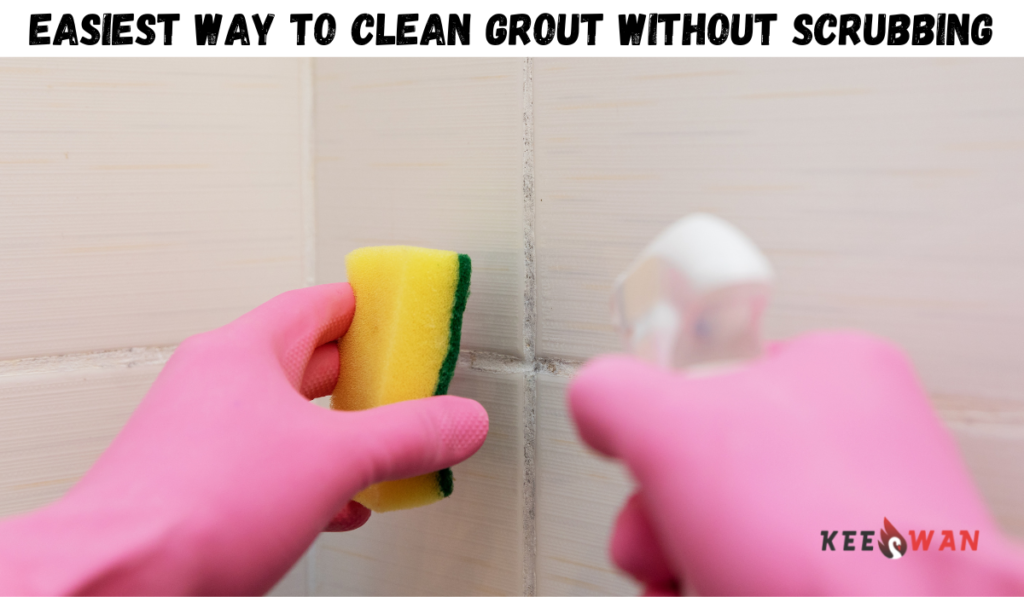Grout can be a magnet for dirt, grime, and stains, making your floors and tiles look dull and unappealing. While traditional cleaning methods often involve laborious scrubbing, there are easier and more effective alternatives. This guide explores the easiest way to clean grout without scrubbing, covering various methods and tips to achieve sparkling clean grout effortlessly.
Why Cleaning Grout Without Scrubbing Matters
Scrubbing grout can be tedious, time-consuming, and tough on your hands and knees. Moreover, excessive scrubbing can damage the grout over time, leading to cracks and wear. By choosing gentler, scrub-free methods, you can maintain the integrity of your grout while keeping it clean and fresh.
Easiest Way to Clean Grout Without Scrubbing
The easiest way to clean grout without scrubbing involves using the right cleaning solutions and techniques to loosen dirt and stains effectively. Here are some popular methods:
1. Use Baking Soda and Vinegar
Baking soda and vinegar create a natural cleaning powerhouse that works wonders on grout.
-
Steps:
-
Mix equal parts baking soda and water to form a paste.
-
Apply the paste to the grout lines.
-
Spray vinegar over the paste and let it sit for 10-15 minutes.
-
Wipe away the residue with a damp cloth.
-
-
Benefits:
-
Eco-friendly and safe.
-
Removes stains and kills bacteria.
-
2. Hydrogen Peroxide Solution
Hydrogen peroxide is a mild bleaching agent that can brighten grout without the need for scrubbing.
-
Steps:
-
Mix hydrogen peroxide with water in a 1:1 ratio.
-
Spray the solution onto the grout.
-
Let it sit for 10 minutes.
-
Wipe the area clean with a cloth or mop.
-
-
Best For: Light-colored grout and stubborn stains.
3. Steam Cleaning
Steam cleaners are one of the most effective tools for cleaning grout without scrubbing.
-
Steps:
-
Fill the steam cleaner with water.
-
Use the nozzle to target grout lines.
-
Allow the steam to loosen dirt and grime.
-
Wipe away the debris with a clean cloth.
-
-
Advantages:
-
Chemical-free.
-
Ideal for deep cleaning.
-
4. Grout Cleaning Products
Specialized grout cleaning products are designed to dissolve dirt and stains without manual effort.
-
Steps:
-
Spray the product directly onto the grout.
-
Follow the manufacturer’s instructions for the best results.
-
Rinse or wipe the area clean.
-
-
Pro Tip: Look for non-toxic, pH-balanced cleaners for safer use.
Easiest Way to Clean Floor Grout Without Scrubbing
Floor grout often accumulates dirt from foot traffic, making it look dingy. To clean floor grout effortlessly:
-
Try Oxygen Bleach:
-
Mix oxygen bleach with water.
-
Pour the solution onto the grout lines.
-
Allow it to sit for 15-30 minutes.
-
Mop up the solution and rinse the floor.
-
-
Lemon Juice and Baking Soda Paste:
-
Combine lemon juice and baking soda to create a thick paste.
-
Spread the paste over the grout.
-
Let it sit for 10 minutes before wiping clean.
-
Easiest Way to Clean Shower Grout Without Scrubbing
Shower grout can develop mold, mildew, and soap scum over time. Here’s how to tackle it:
-
Vinegar and Dish Soap Mixture:
-
Mix equal parts white vinegar and liquid dish soap.
-
Spray the solution onto the grout.
-
Let it sit for 15 minutes.
-
Rinse thoroughly with warm water.
-
-
Bleach Gel:
-
Apply bleach gel directly to the grout.
-
Leave it for 10-15 minutes.
-
Rinse away with water.
-
-
Essential Oils for a Natural Approach:
-
Add a few drops of tea tree oil to water.
-
Spray the mixture onto the grout.
-
Allow it to work its magic before rinsing clean.
-
Easiest Way to Clean Grout Without Scrubbing Shower
Cleaning grout in the shower can be challenging, but these tips make it easy:
-
Use a No-Scrub Grout Cleaner: These products are designed to break down soap scum and grime without manual scrubbing.
-
Utilize a Power Washer: A handheld power washer can blast away dirt from shower grout effortlessly.
-
Preventive Measures: Regularly spray a vinegar-water solution on the grout to prevent buildup.
Maintaining Clean Grout
Keeping your grout clean doesn’t have to be a hassle. Here are some tips to maintain it:
-
Seal the Grout: Use a grout sealer to protect against stains and moisture.
-
Clean Regularly: Wipe down tiles and grout after use to prevent buildup.
-
Use Rugs and Mats: Place rugs in high-traffic areas to minimize dirt on floor grout.
-
Ventilate Bathrooms: Proper ventilation reduces humidity, preventing mold and mildew on shower grout.
Final Thoughts: Easiest Way to Clean Grout Without Scrubbing
Cleaning grout doesn’t have to involve back-breaking scrubbing sessions. By using effective cleaning solutions like baking soda and vinegar, hydrogen peroxide, or steam cleaning, you can restore your grout’s shine with minimal effort. Whether you’re tackling floor grout, shower grout, or high-traffic areas, these methods will save you time and energy while delivering excellent results.
Adopt these simple, scrub-free techniques and enjoy spotless grout that enhances the overall appearance of your home.









